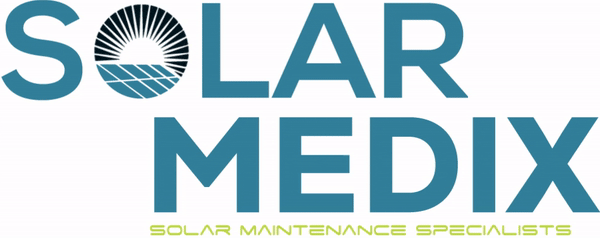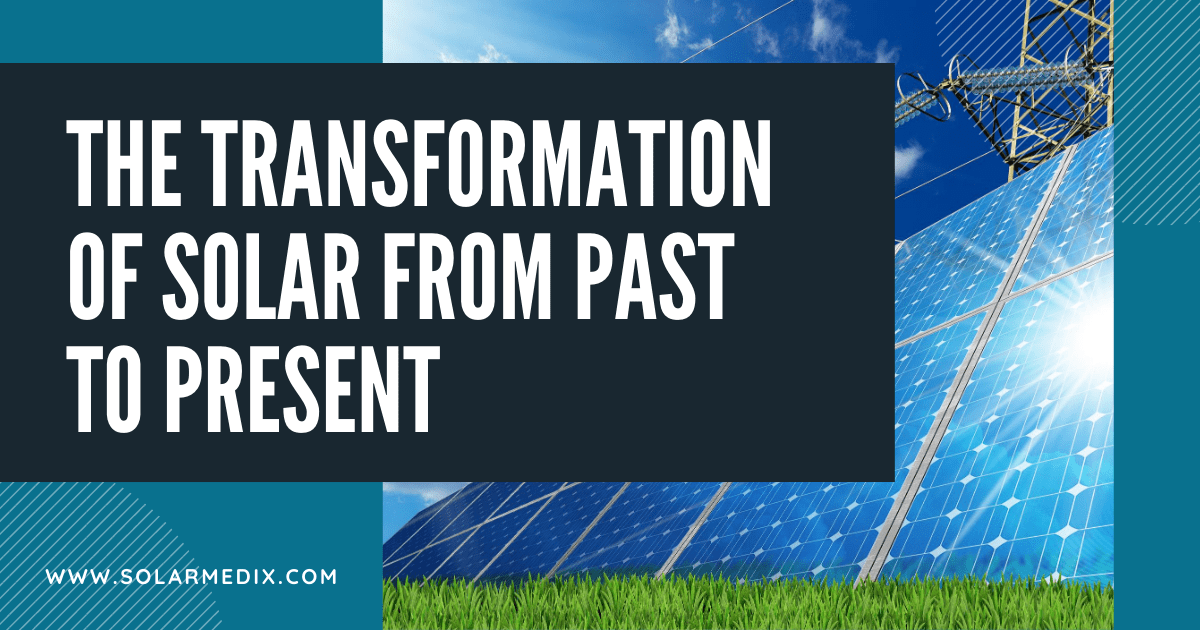The solar industry still feels very young and new, despite the transformation of solar over the years. You might be surprised to learn that the concept of solar power has been around for hundreds of years.
The technological advancements happening today and in the future will ensure that the technology will be with us for years to come. Let’s take a look at the long history of solar power up to the present day.
Discovery of the Photovoltaic Effect
Humans have used mirrors and reflective surfaces to concentrate solar rays for hundreds of years. However, it was not until 1839 that the PV effect was discovered. Edmond Becquerel was working with electrolytic cells when he accidentally generated electricity by exposing them to sunlight. He was just 19 when he put silver chloride in an acidic solution, and electricity was generated when exposed to sunlight.
In 1876, William Grylls Adams, a professor and his student, Richard Evans Day, did further research on the PV effect. They exposed selenium to sunlight and generated current. However, they could not get enough of it to power electrical equipment. What they did manage to prove was that solid materials without any moving parts could generate electricity. As a result, the PV cell was created.
In 1883, Charles Fritts, an American inventor, created a working selenium cell. He coated the cell in a layer of gold, and it was the first working solar cell with an efficiency of 1%. In 1884, his solar cells were used in the world’s first rooftop solar panels in NYC. However, the high material cost was a hindrance to mass adoption.
In 1905, Albert Einstein produced the first scientific paper explaining how light is converted into electricity. In 1921, Einstein received the Nobel Prize in Physics for his discovery of the law of the photoelectric effect.
In 1954, scientists at Bell Labs developed the silicon PV cell. It was the first time that enough solar energy had been converted into electricity to power electric equipment. The scientists at Bell Labs managed to achieve an efficiency of 6%. These solar panels were installed on satellites orbiting the earth, and Vanguard I launched in 1958 with six solar cells that produced around 1W of power.
Research continued into solar cells in labs across the world. However, commercialization was slow to catch on. In 1963, success was achieved with the mass production of solar cells, making it practical for use by the public.
The 70’s Oil Crisis
In 1973, the world faced an oil crisis, which led to an increased interest in solar power. With funding from Exxon, Dr. Elliot Berman was able to design cheap solar panels that helped to lower the cost from $100 per watt to just $20 per watt.
Berman discovered that using silicon from multiple crystals was cheaper compared to using one crystal. However, some efficiency was lost. Today, multi-crystalline panels are more affordable but still have lower efficiency than monocrystalline panels.
In 1974, the Solar Energy Industries Association was formed and worked to promote the use and development of solar power in the US. The U.S. Department of Energy launched the Solar Energy Research Institute in 1977. Today, it is called the National Renewable Energy Laboratory (NREL).
In 1980, ARCO Solar became the first panel-maker to hit 1MW annually. Two years later, the company installed the first megawatt-scale solar project in California.
In 1986, ARCO Solar became the first company to produce commercial thin-film power modules. Six short years later, researchers at the University of South Florida achieved 15.9% efficiency using cadmium telluride thin-film. Today, solar panels have achieved an efficiency of 22%.
In 1993, Pacific Gas & Electric became the first US utility to support distributed systems with a 500kW PV array installed in Kerman, CA. In 1998, Subhendu Guha invented the first flexible thin-film product.
Solar from 2000 to Present-Day
In 2000, Worldwide solar PV installations surpassed 1GW. The US hit 1 GW in solar power around 2008 and surpassed 25GW in 2015.
The first solar production plant in Perrysburg, Ohio, opened as the world’s biggest PV manufacturing plant with an estimated yearly production capacity of 100 MW, although the company was only reaching 25 MW each year until 2005.
In 2002, The North American Board of Certified Energy Practitioners (NABCEP) established a non-profit organization for solar accreditation and certification programs in the transformation of solar. The first exam was administered the following year.
In 2005, a federal investment tax credit of 30% was established under The Energy Policy Act of 2005, and in 2007, Nanosolar shipped the first CIGS thin-film solar modules. At the time, they were makers of the cheapest solar panels at $0.99 per watt. In 2008, Enphase produced the first commercially successful microinverter in the solar industry.
In 2011, the Department of Energy launched the SunShot Initiative to make solar energy competitive with other forms of power by 2020. The goal is 10 cents per kWh for residential solar, 8 cents per kWh for commercial solar, and 6 cents per kWh for utility PV installations.
In 2015, the residential solar market in the US installed over 2GW of solar power in a year. At the time, the total solar capacity surpassed 20GW for the first time. Google also launched project Sunroof with the goal of using Google Earth images to analyze roofs and local weather patterns to create solar plans for homeowners.
In 2016, solar power in the US became the number one source of new electric generating capacity annually for the first time. At that time, a new MW of solar power was coming online every 36 minutes.
The Transformation of Solar Continues
Fast forward to present-day, and the COVID-19 pandemic has slowed down the rate of solar panel installations. But, once the global economy returns to normal, the addition of solar capacity is expected to continue rising as the transformation of solar moves forward.
Various technologies and techniques continue to be developed, and these developments aim to increase the efficiency of solar panels over time while also lowering the cost.













